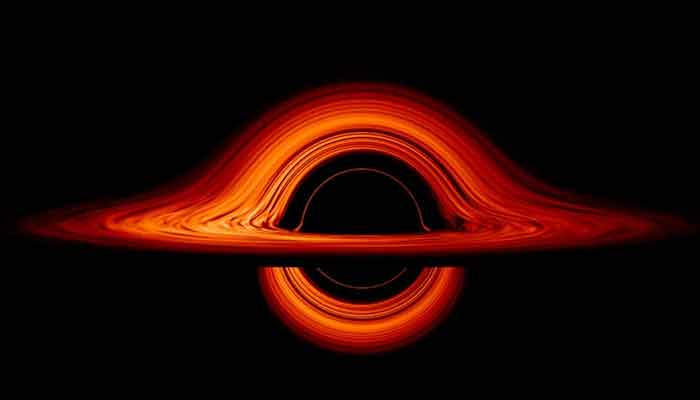Researchers have put forward a new hypothesis in a recent paper suggesting that dark matter may have played a significant role in the formation of the colossal black holes observed in the early universe. Space.com reports that increasingly more observations, particularly those made with the James Webb Space Telescope, are revealing the existence of truly gigantic black holes that appeared relatively early in the cosmos’s history.
It appears that just a few hundred million years after the Big Bang, our universe was already home to black holes with masses billions of times greater than that of our sun. Furthermore, the only currently understood mechanism for black hole creation involves the deaths of massive stars, a process that typically yields black holes with masses only a few dozen times that of the sun. There simply wasn’t enough time for the first stars to form, undergo supernova events, and for the resulting small black holes to accrete sufficient matter to evolve into supermassive black holes, which explains the puzzle of their early appearance.
Therefore, it is plausible that the early universe possessed an alternative mechanism for creating these massive black holes, one that could have initiated the process more rapidly. The most straightforward such mechanism involves the direct collapse of enormous clouds of helium and hydrogen under their own gravity, bypassing the stage of star formation entirely and proceeding directly to the development of black holes.
However, molecular hydrogen, which is highly effective at cooling gas, often forms during the gravitational collapse of gas clouds. This cooling effect prevents the cloud from collapsing directly into a black hole by causing it to fragment into numerous smaller pieces, leading to the formation of a cluster of young stars. High-energy ultraviolet (UV) radiation, which was scarce in the early universe due to the limited number of stars, could potentially blast apart molecular hydrogen, preventing its formation.
Adding an unconventional perspective, Hao Jiao of McGill University in Quebec and his colleagues propose in a new study published in March and available on the preprint database arXiv that dark matter might offer an explanation. Certain models of dark matter predict that it could be extraordinarily light, even billions of times lighter than the neutrino, the lightest known particle. If dark matter possesses such ultralight properties, then on galactic scales, it would behave more like a quantum ocean rather than a collection of discrete, individual particles.



